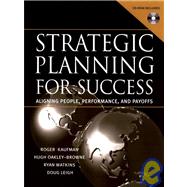
Note: Supplemental materials are not guaranteed with Rental or Used book purchases.
Purchase Benefits
What is included with this book?
|
xiii | ||||
| Preface | xix | ||||
| Introduction | 1 | (3) | |||
|
4 | (35) | |||
|
4 | (1) | |||
|
5 | (11) | |||
|
16 | (2) | |||
|
18 | (7) | |||
|
25 | (2) | |||
|
27 | (7) | |||
|
34 | (5) | |||
|
39 | (18) | |||
|
39 | (1) | |||
|
40 | (2) | |||
|
42 | (2) | |||
|
44 | (7) | |||
|
51 | (6) | |||
|
57 | (24) | |||
|
57 | (1) | |||
|
58 | (6) | |||
|
64 | (8) | |||
|
72 | (7) | |||
|
79 | (1) | |||
|
79 | (2) | |||
|
81 | (30) | |||
|
81 | (3) | |||
|
84 | (5) | |||
|
89 | (7) | |||
|
96 | (6) | |||
|
102 | (1) | |||
|
103 | (8) | |||
|
111 | (47) | |||
|
111 | (1) | |||
|
112 | (1) | |||
|
113 | (10) | |||
|
123 | (3) | |||
|
126 | (5) | |||
|
131 | (7) | |||
|
138 | (5) | |||
|
143 | (9) | |||
|
152 | (2) | |||
|
154 | (4) | |||
|
158 | (29) | |||
|
158 | (1) | |||
|
159 | (5) | |||
|
164 | (1) | |||
|
165 | (2) | |||
|
167 | (6) | |||
|
173 | (14) | |||
|
187 | (37) | |||
|
187 | (1) | |||
|
188 | (5) | |||
|
193 | (1) | |||
|
194 | (9) | |||
|
203 | (4) | |||
|
207 | (6) | |||
|
213 | (5) | |||
|
218 | (3) | |||
|
221 | (3) | |||
|
224 | (33) | |||
|
224 | (1) | |||
|
225 | (1) | |||
|
226 | (5) | |||
|
231 | (3) | |||
|
234 | (7) | |||
|
241 | (3) | |||
|
244 | (3) | |||
|
247 | (3) | |||
|
250 | (7) | |||
|
257 | (51) | |||
|
257 | (1) | |||
|
258 | (1) | |||
|
259 | (12) | |||
|
271 | (13) | |||
|
284 | (2) | |||
|
286 | (22) | |||
|
308 | (23) | |||
|
310 | (9) | |||
|
319 | (8) | |||
|
327 | (1) | |||
|
328 | (2) | |||
|
330 | (1) | |||
| Appendix A: Paradigm Shift for Teaching/Learning | 331 | (10) | |||
| Appendix B: A Glossary and Classification of Terms and Tools | 341 | (14) | |||
| Appendix C: A Suggested Code of Professional Conduct for Defining and Delivering High Payoff Results | 355 | (8) | |||
| References | 363 | (10) | |||
| Index | 373 | (10) | |||
| About the Authors | 383 | (4) | |||
| About the International Society for Performance Improvement | 387 | (2) | |||
| How to Use the CD-ROM | 389 |
The New copy of this book will include any supplemental materials advertised. Please check the title of the book to determine if it should include any access cards, study guides, lab manuals, CDs, etc.
The Used, Rental and eBook copies of this book are not guaranteed to include any supplemental materials. Typically, only the book itself is included. This is true even if the title states it includes any access cards, study guides, lab manuals, CDs, etc.